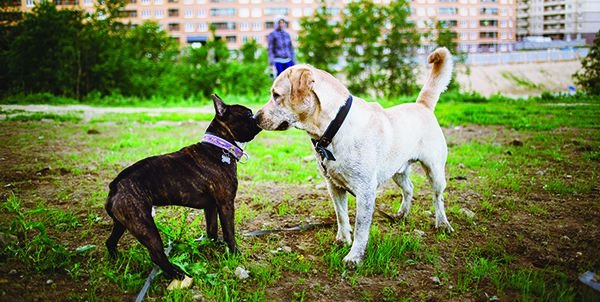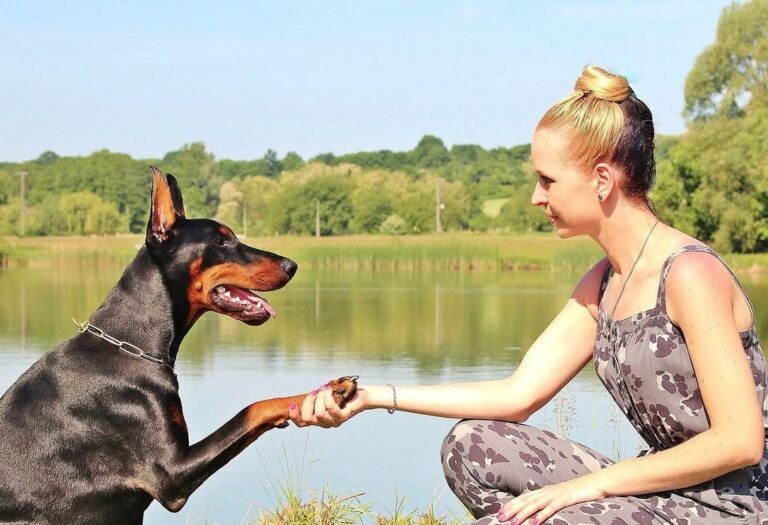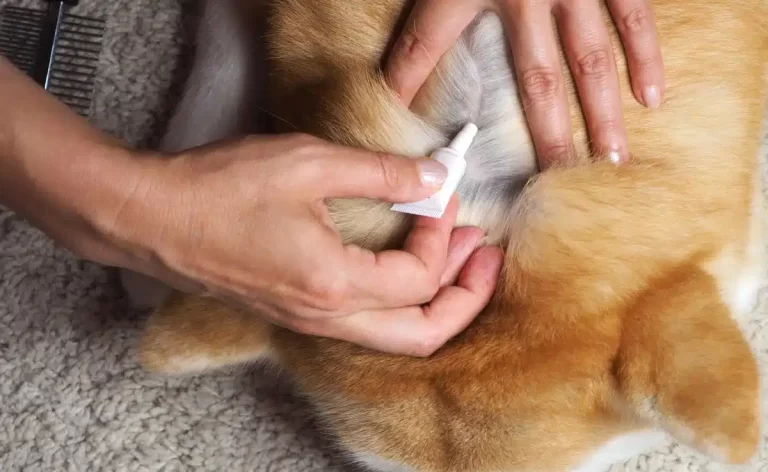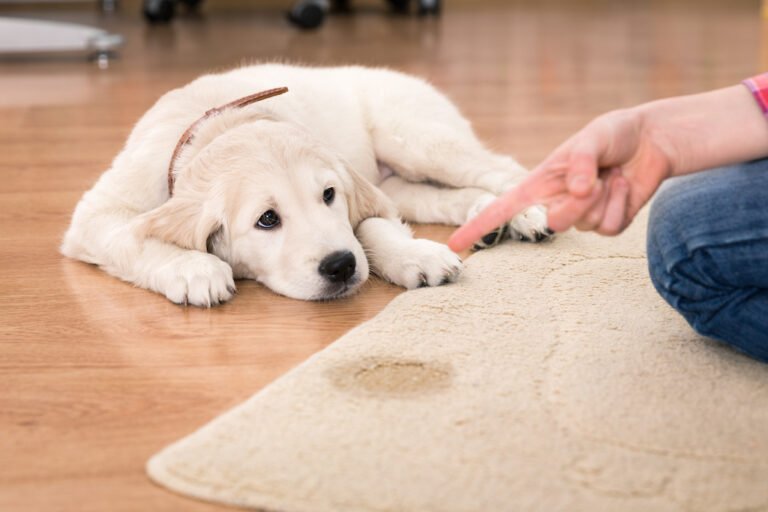How To Make Your Dog Friendly With Other Dogs
How do I train my dog to be friendly to other dogs?
Training your dog to be friendly with other dogs involves socialization, positive reinforcement, and patience. Here are some tips to help you in this process:
- Start Early:
- Puppyhood is an ideal time for socialization. Expose your puppy to a variety of environments, people, and other dogs in a positive and controlled manner.
- Positive Reinforcement:
- Reward your dog with treats, praise, and affection when they exhibit friendly behavior towards other dogs. Positive reinforcement helps create positive associations.
- Use Treats and Toys:
- Bring treats or toys with you on walks or during socialization outings. When your dog sees another dog, reward them for calm behavior.
- Gradual Exposure:
- Introduce your dog to other dogs gradually and in controlled settings. Start with calm and well-behaved dogs before introducing more energetic or excitable ones.
- Controlled Meetings:
- When introducing your dog to a new dog, do so in a neutral territory. Keep both dogs on leashes initially, allowing them to sniff each other with supervision.
- Observe Body Language:
- Pay attention to your dog’s body language and that of other dogs. Look for signs of stress, fear, or discomfort. If either dog appears uneasy, give them space and try a more gradual introduction.
- Regular Socialization:
- Regularly expose your dog to different dogs in various environments. This helps them become more adaptable and comfortable in different situations.
- Obedience Training:
- Basic obedience commands, such as “sit,” “stay,” and “come,” are important during interactions with other dogs. These commands give you control and help manage situations.
- Positive Associations:
- Create positive associations by associating encounters with other dogs with positive experiences. This could include playtime, treats, or a favorite toy.
- Seek Professional Help if Needed:
- If your dog displays aggression or extreme fear toward other dogs, consider seeking help from a professional dog trainer or behaviorist. They can provide tailored advice and assistance.
Remember that each dog is an individual, and the pace of socialization may vary. Be patient and go at your dog’s comfort level. Consistent positive experiences will help your dog build confidence and become more friendly with other dogs over time.
How do I stop my dog from being aggressive towards other dogs?
Addressing aggression in dogs requires careful management, positive training techniques, and, in some cases, the assistance of a professional dog trainer or behaviorist. Here are steps you can take to help stop your dog from being aggressive towards other dogs:
- Identify Triggers:
- Pay attention to situations or specific triggers that lead to your dog’s aggressive behavior. Understanding the triggers can help you manage and address the issue more effectively.
- Consult with a Professional:
- If your dog’s aggression is severe or if you’re unsure about how to handle it, consult with a professional dog trainer or behaviorist. They can assess the situation and provide guidance tailored to your dog’s specific needs.
- Use Positive Reinforcement:
- Reward your dog for calm and non-aggressive behavior around other dogs. Positive reinforcement involves giving treats, praise, or toys when your dog behaves appropriately.
- Desensitization and Counterconditioning:
- Gradually expose your dog to other dogs in a controlled and positive way. Use treats and rewards to create positive associations with the presence of other dogs.
- Teach Basic Commands:
- Strengthen basic obedience commands like “sit,” “stay,” and “leave it.” These commands provide you with better control in situations where your dog might become aggressive.
- Manage the Environment:
- Avoid situations that trigger your dog’s aggression whenever possible. Manage their environment to prevent confrontations with other dogs until you have a solid training foundation.
- Create Positive Associations:
- Encourage positive interactions with other dogs by allowing controlled, supervised playdates with well-behaved dogs. Gradually increase the complexity of interactions as your dog becomes more comfortable.
- Stay Calm and Assertive:
- Dogs often pick up on their owners’ emotions. Stay calm and assertive in your interactions with your dog to convey a sense of leadership and stability.
- Use Leashes and Muzzles:
- When in public or in situations where you may encounter other dogs, use a leash and consider a basket muzzle for added safety. This helps prevent aggressive behavior and protects other dogs.
- Be Consistent:
- Consistency is key in dog training. Be consistent in your commands, rewards, and responses to your dog’s behavior. Inconsistency can lead to confusion and undermine training efforts.
Remember that addressing aggression may take time and patience. Seek professional guidance if needed, and prioritize the safety of both your dog and others in the process. It’s essential to address aggressive behavior promptly to prevent potential harm and ensure a positive relationship with your dog.
What do you do if your dog is not friendly with other dogs?
If your dog is not friendly with other dogs, it’s essential to address the issue proactively to ensure the safety of your dog, other dogs, and people. Here are some steps you can take:
- Understand the Triggers:
- Identify the situations or specific triggers that lead to your dog’s unfriendly behavior. Understanding the triggers can help you manage and address the issue effectively.
- Consult with a Professional:
- Seek guidance from a professional dog trainer or behaviorist. They can assess your dog’s behavior, provide personalized advice, and help create a training plan to address the unfriendly behavior.
- Positive Reinforcement Training:
- Use positive reinforcement techniques to reward your dog for calm and non-aggressive behavior around other dogs. Reward with treats, praise, or toys when your dog exhibits positive behavior.
- Gradual Exposure:
- Gradually expose your dog to other dogs in a controlled and positive manner. Use treats and rewards to create positive associations with the presence of other dogs.
- Obedience Training:
- Strengthen basic obedience commands such as “sit,” “stay,” and “leave it.” These commands provide you with better control in situations where your dog might become unfriendly.
- Create Positive Associations:
- Encourage positive interactions with other dogs by allowing controlled, supervised playdates with well-behaved dogs. Start with calm and non-threatening dogs, and gradually increase the complexity of interactions.
- Use Leashes and Muzzles:
- When in public or in situations where you may encounter other dogs, use a leash and consider a basket muzzle for added safety. This helps prevent unfriendly behavior and protects other dogs.
- Avoid Confrontations:
- If your dog is not friendly with other dogs, avoid confrontations whenever possible. Manage their environment to prevent situations that may trigger aggression.
- Stay Calm and Assertive:
- Dogs often pick up on their owners’ emotions. Stay calm and assertive in your interactions with your dog to convey a sense of leadership and stability.
- Be Patient and Consistent:
- Changing behavior takes time. Be patient and consistent in your training efforts. Consistency is crucial for success.
It’s important to address unfriendly behavior promptly to prevent potential harm and ensure a positive relationship with your dog. Seeking professional help can be particularly beneficial, as a qualified trainer or behaviorist can provide insights and techniques specific to your dog’s needs.
Why does my dog go crazy when he sees another dog?
If your dog becomes overly excited or exhibits what might be perceived as “crazy” behavior when seeing another dog, it could be due to a variety of reasons. Here are some potential explanations:
- Excitement and Eagerness:
- Your dog may simply be very excited to see another dog. Dogs are social animals, and the presence of another dog can trigger enthusiastic and energetic behavior.
- Lack of Socialization:
- If your dog hasn’t been adequately socialized with other dogs during puppyhood, they may become overly excited or anxious when encountering them later in life.
- Leash Frustration:
- Dogs on leashes may exhibit heightened excitement or frustration because they are restricted and unable to approach the other dog freely. This can result in pulling, barking, or other hyperactive behaviors.
- Reactivity or Aggression:
- In some cases, what might appear as excitement could be reactivity or aggression. Your dog may be expressing frustration or fear, leading to intense behavior.
- Playful Behavior:
- Some dogs express their desire to play with others through exuberant behavior. Play bows, barking, and other playful signals can be misinterpreted as hyperactivity.
- Hormonal Changes:
- If your dog is intact and not neutered or spayed, hormonal changes can influence behavior, especially around other dogs.
- Training Gaps:
- Inconsistent training or a lack of impulse control training can contribute to hyperactive behavior. If your dog hasn’t learned how to greet other dogs calmly, they may become overly excited.
- Excitement Arousal:
- The presence of another dog may trigger a surge of adrenaline, leading to hyperactivity. This is common in some dogs, especially those with high energy levels.
To address your dog’s behavior, consider the following steps:
- Positive Reinforcement Training: Reward calm behavior around other dogs with treats, praise, or toys.
- Socialization: Gradually expose your dog to various dogs in controlled settings to improve their social skills.
- Leash Training: Work on leash manners to reduce frustration and hyperactivity during walks.
- Obedience Training: Strengthen basic commands to gain better control over your dog in different situations.
- Consult a Professional: If the behavior is challenging to manage, consider seeking guidance from a professional dog trainer or behaviorist.
Understanding the underlying cause of your dog’s behavior can help you tailor your approach to training and ensure a more positive and controlled reaction when they encounter other dogs.
Should I scold my dog for barking at other dogs?
Scolding a dog for barking at other dogs may not be the most effective approach to modify their behavior. Here are some considerations:
- Understand the Reason for Barking:
- Dogs may bark at other dogs for various reasons, including excitement, fear, frustration, or a desire to play. Understanding the underlying cause can help you address the behavior more effectively.
- Positive Reinforcement:
- Positive reinforcement is generally more effective than punishment. Instead of scolding, try rewarding your dog for calm behavior around other dogs. Use treats, praise, or toys to create positive associations.
- Redirect Attention:
- Train your dog to focus on you in the presence of other dogs. Use treats or toys to redirect their attention away from potential triggers and toward you.
- Training Alternative Behaviors:
- Teach your dog alternative behaviors, such as sitting or staying, when they see other dogs. Reward these calm behaviors to reinforce them.
- Avoid Punishment:
- Scolding or punishing a dog for barking may increase stress and anxiety, potentially worsening the behavior or leading to other behavioral issues.
- Identify Triggers:
- Understand what triggers your dog’s barking and work on desensitizing them to those triggers through gradual exposure.
- Consider Professional Help:
- If your dog’s barking is challenging to manage, consider seeking the assistance of a professional dog trainer or behaviorist. They can provide personalized guidance based on your dog’s specific needs.
- Ensure Adequate Exercise and Mental Stimulation:
- A well-exercised and mentally stimulated dog is less likely to exhibit excessive barking. Make sure your dog gets enough physical and mental stimulation to help address behavioral issues.
Remember that each dog is an individual, and the effectiveness of training methods can vary. Scolding may not address the root cause of the barking and may create a negative association with other dogs. Positive reinforcement and consistent, patient training are generally more successful in modifying behavior and building a positive relationship with your dog.
Is it too late to socialize a dog?
While it’s generally easier to socialize a dog during their puppyhood, it’s never too late to work on socialization. Dogs can continue to learn and adapt throughout their lives, and positive experiences can help improve their behavior and reduce anxiety around new people, animals, and environments.
Here are some tips for socializing an adult dog:
- Take It Slow:
- Introduce your dog to new experiences gradually. Start with less challenging situations and gradually progress to more complex ones.
- Positive Reinforcement:
- Use positive reinforcement techniques to reward calm and confident behavior. Treats, praise, and toys can help create positive associations.
- Controlled Environments:
- Begin socialization in controlled environments, such as a quiet park or a friend’s backyard. This allows you to manage the level of stimulation and avoid overwhelming your dog.
- Expose to Various Situations:
- Expose your dog to various situations, including different people, dogs, sounds, and environments. This helps them become more adaptable and less fearful of new experiences.
- Enroll in Training Classes:
- Enroll your dog in positive reinforcement-based training classes. These classes not only provide valuable training but also offer controlled opportunities for socialization with other dogs.
- Work with a Professional:
- Consider working with a professional dog trainer or behaviorist, especially if your dog exhibits fear or aggression. A professional can provide guidance tailored to your dog’s specific needs.
- Use Desensitization Techniques:
- Gradually desensitize your dog to specific triggers or stimuli that cause fear or anxiety. For example, if your dog is afraid of other dogs, start at a distance where they are comfortable and gradually decrease the distance over time.
- Stay Positive and Patient:
- Stay positive and patient throughout the socialization process. Avoid forcing your dog into situations that make them uncomfortable, and reward small steps of progress.
Remember that the goal of socialization is to create positive associations with new experiences, people, and animals. It’s important to go at your dog’s pace and not overwhelm them. Be aware of their body language and reactions, and make adjustments accordingly. While socializing an adult dog may take more time and patience compared to a puppy, it is definitely possible and can lead to positive behavioral changes.
How do you socialize an aggressive dog?
Socializing an aggressive dog requires careful and systematic efforts, and it’s crucial to prioritize safety for both your dog and others. If you’re dealing with aggression in a dog, especially if it’s severe, it’s highly recommended to seek the guidance of a professional dog behaviorist or trainer. They can provide personalized advice based on the specific needs and behaviors of your dog. Here are general guidelines:
- Professional Assessment:
- Before beginning any socialization efforts, consult with a professional dog behaviorist or trainer to assess the underlying causes of aggression and develop a tailored plan.
- Safety Measures:
- Implement safety measures to prevent potential harm. Use a secure leash, harness, or muzzle to ensure control during socialization attempts.
- Gradual Exposure:
- Gradually expose your dog to controlled and low-stress situations. Start with a safe distance from the trigger and gradually decrease the distance as your dog becomes more comfortable.
- Positive Reinforcement:
- Use positive reinforcement techniques to reward calm and non-aggressive behavior. Reward with treats, praise, or toys when your dog exhibits appropriate reactions.
- Desensitization:
- Work on desensitization by exposing your dog to the stimuli that trigger aggression at a low intensity. Gradually increase the intensity over time as your dog becomes more tolerant.
- Structured Training Classes:
- Enroll your dog in structured training classes led by experienced professionals who can manage and control the environment. This provides controlled socialization opportunities.
- Counterconditioning:
- Implement counterconditioning by associating positive experiences with the trigger of aggression. For example, if your dog is aggressive toward other dogs, reward calm behavior when they are in the presence of another dog.
- Avoid Punishment:
- Avoid using punishment as it can increase stress and fear, potentially worsening aggressive behavior. Focus on positive reinforcement and reward-based training.
- Provide Consistency:
- Be consistent in your commands, rewards, and responses to your dog’s behavior. Consistency is crucial in training.
- Seek Professional Help:
- If aggression is severe or if progress is slow, consult with a professional behaviorist or trainer who specializes in aggression. They can provide hands-on guidance and support.
Remember, socializing an aggressive dog requires time, patience, and professional expertise. It’s essential to prioritize safety, take gradual steps, and seek professional help to ensure a positive and successful socialization process. Aggression in dogs can have various causes, and an individualized approach is necessary to address the specific factors contributing to the behavior.







